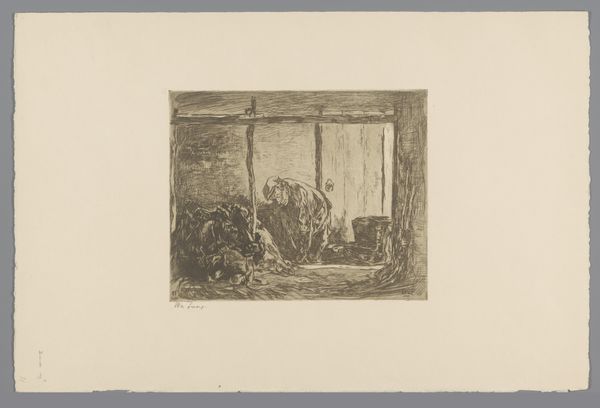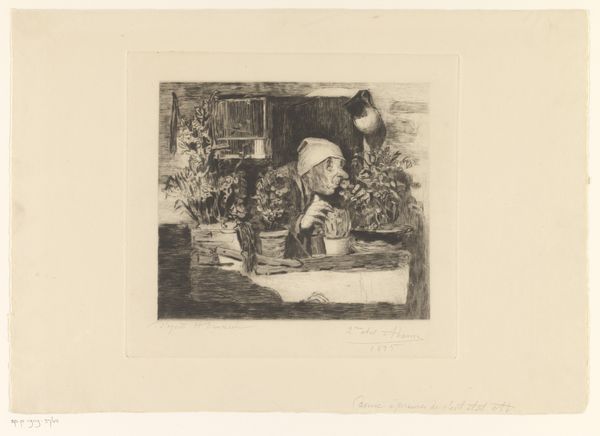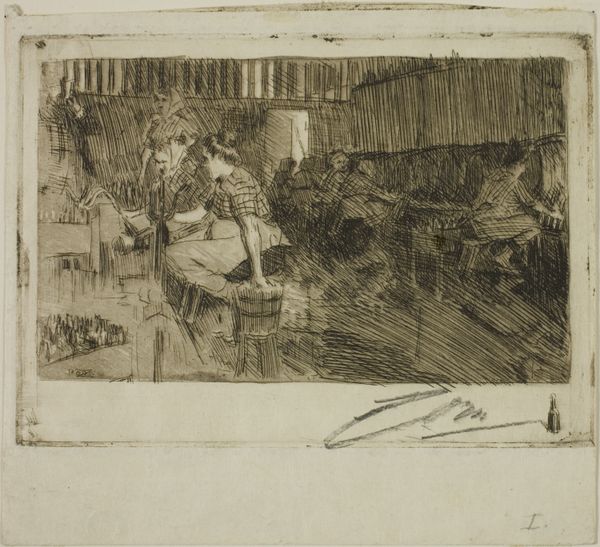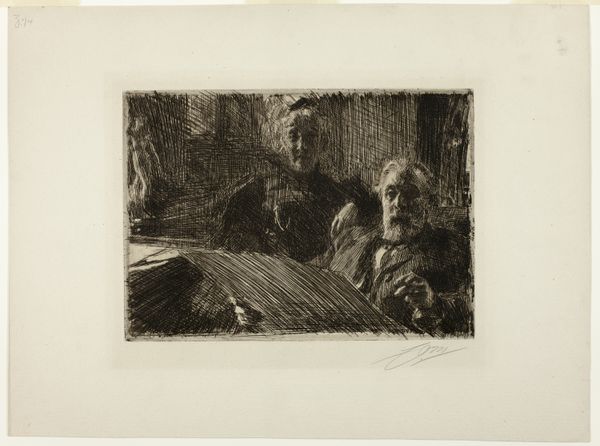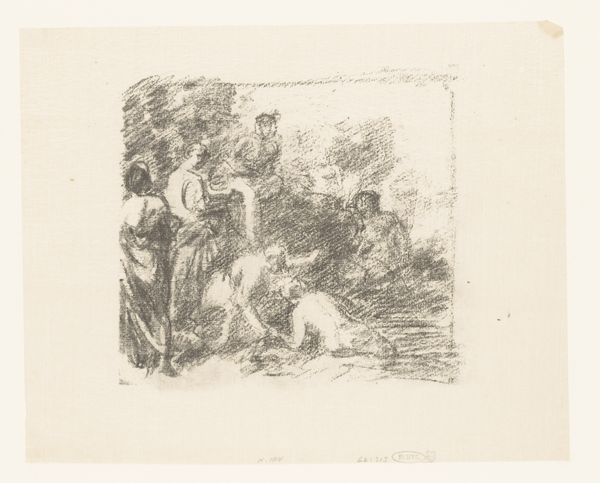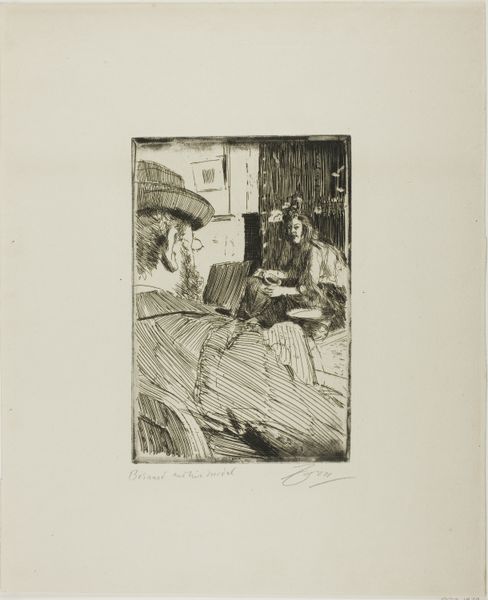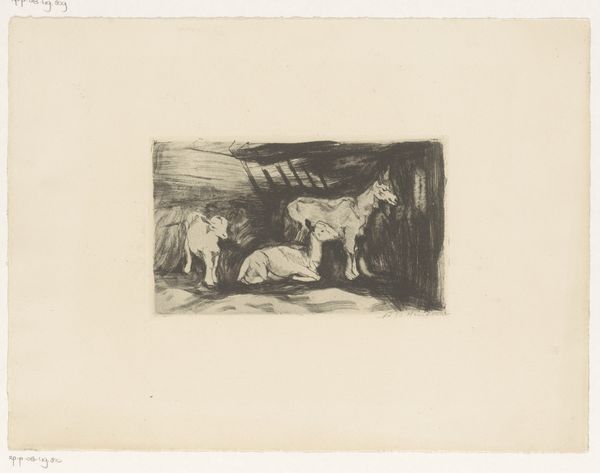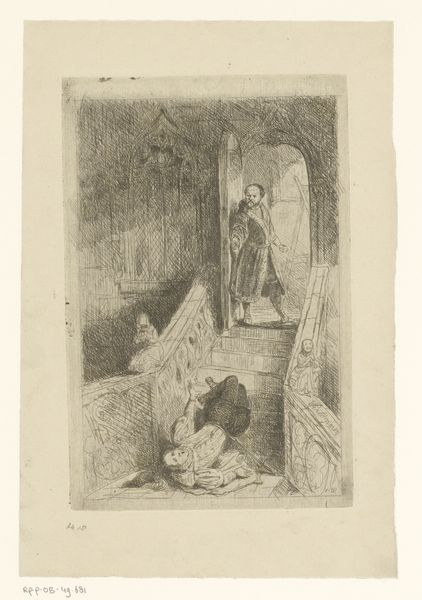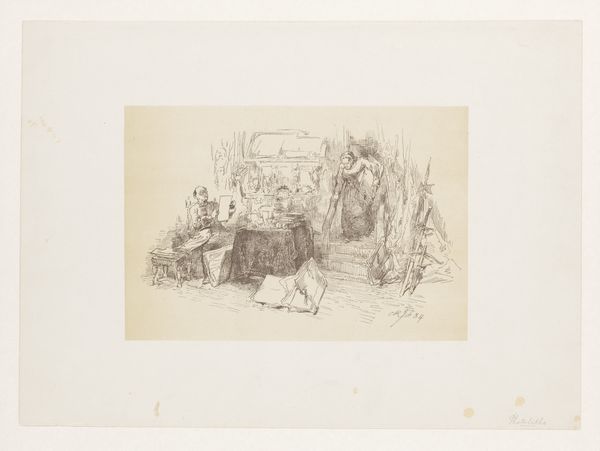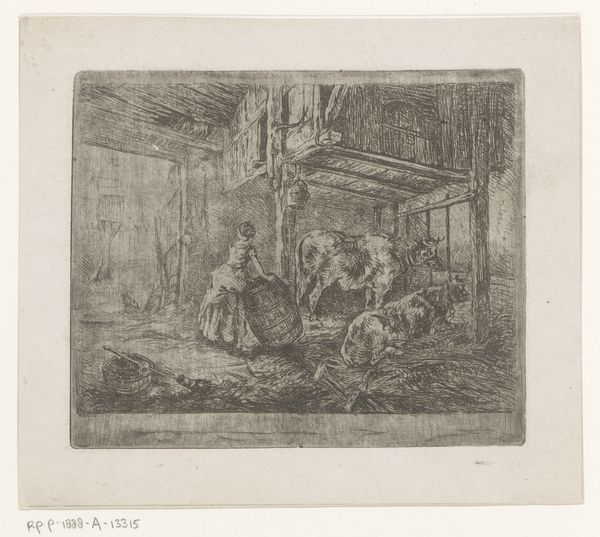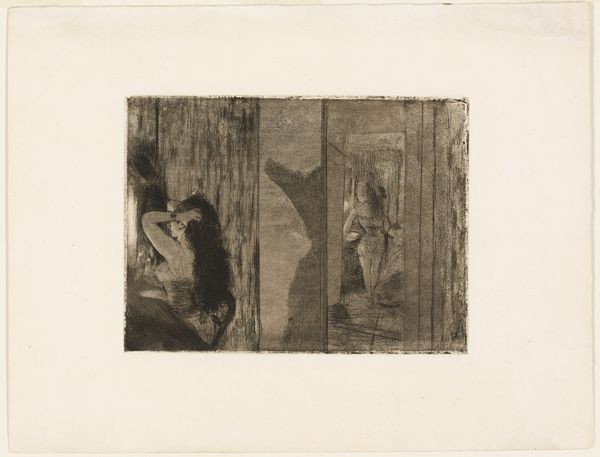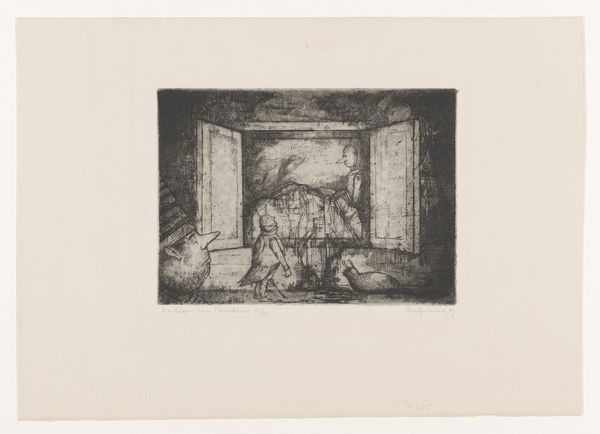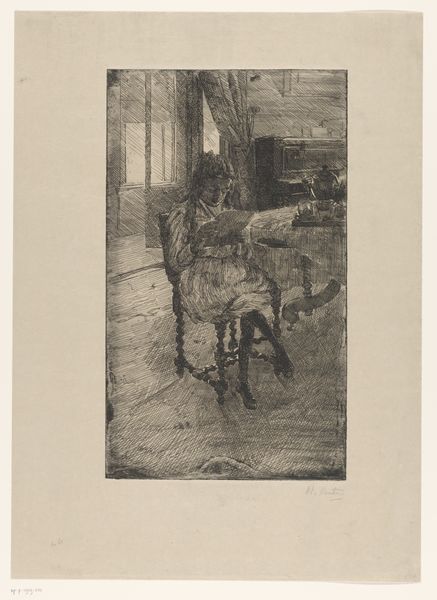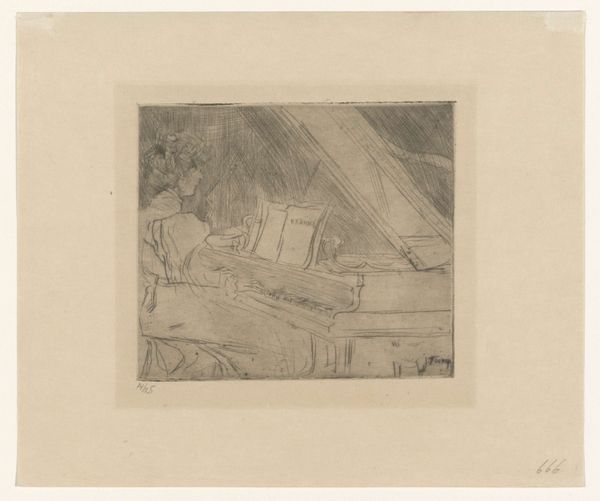
drawing, print, etching, paper, ink
#
portrait
#
drawing
# print
#
impressionism
#
etching
#
paper
#
ink
#
genre-painting
Dimensions: 117 × 157 mm (image/plate); 214 × 287 mm (sheet)
Copyright: Public Domain
Edgar Degas made this print, The Laundresses, using etching and aquatint. Degas' print offers a glimpse into the lives of working-class women in 19th-century France. This wasn't the typical subject matter being exhibited in art institutions at the time. The art world tended to focus on wealthy people or historical or mythological scenes. The image depicts two women in a cramped workspace, surrounded by piles of laundry. They are hunched over their work, their faces etched with exhaustion. The print's dark, gritty tones emphasize the harsh realities of their labor, a stark contrast to the polished images usually found in art galleries. Degas made this print during a period of rapid social and economic change in France. The Industrial Revolution created new opportunities for some, but it also led to increased poverty and hardship for many others. Artists like Degas began to challenge the established norms of the art world by depicting these realities, questioning the role of art as a mere decoration. To truly understand this print, we have to consider the social conditions in which it was made. Examining the history of labor, gender, and class in 19th-century France helps us appreciate the artist's decision to represent these women and to reflect on the meaning of art as a social commentary.
Comments
No comments
Be the first to comment and join the conversation on the ultimate creative platform.
